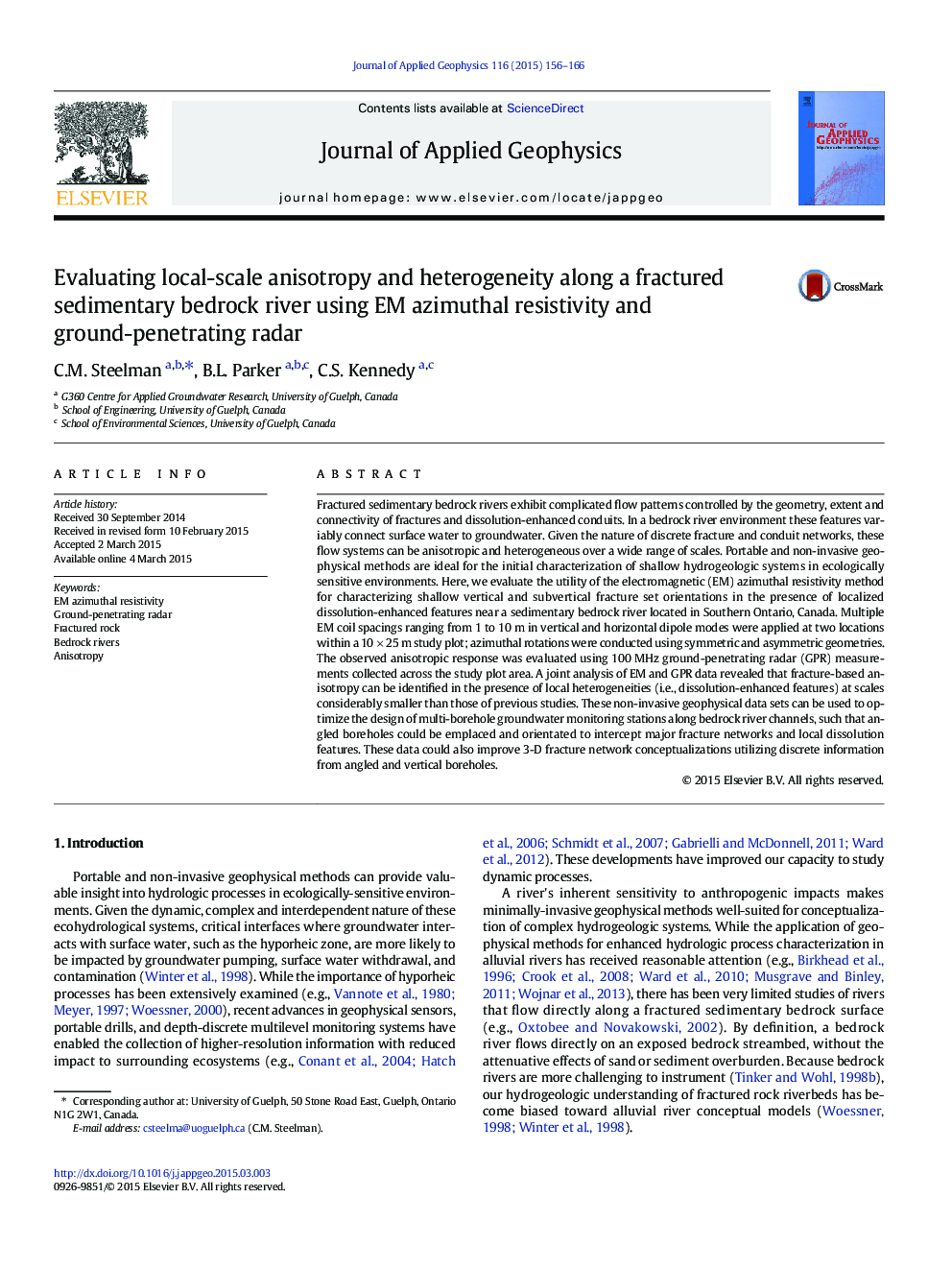| Article ID | Journal | Published Year | Pages | File Type |
|---|---|---|---|---|
| 4739964 | Journal of Applied Geophysics | 2015 | 11 Pages |
•Electrical anisotropy is measured in a shallow fractured bedrock riverbed.•Anisotropic response is evaluated against full-resolution GPR.•Observations indicate highly variable anisotropy due to dissolution features.•EM azimuthal method suitable for assessing fracture flow networks along rivers
Fractured sedimentary bedrock rivers exhibit complicated flow patterns controlled by the geometry, extent and connectivity of fractures and dissolution-enhanced conduits. In a bedrock river environment these features variably connect surface water to groundwater. Given the nature of discrete fracture and conduit networks, these flow systems can be anisotropic and heterogeneous over a wide range of scales. Portable and non-invasive geophysical methods are ideal for the initial characterization of shallow hydrogeologic systems in ecologically sensitive environments. Here, we evaluate the utility of the electromagnetic (EM) azimuthal resistivity method for characterizing shallow vertical and subvertical fracture set orientations in the presence of localized dissolution-enhanced features near a sedimentary bedrock river located in Southern Ontario, Canada. Multiple EM coil spacings ranging from 1 to 10 m in vertical and horizontal dipole modes were applied at two locations within a 10 × 25 m study plot; azimuthal rotations were conducted using symmetric and asymmetric geometries. The observed anisotropic response was evaluated using 100 MHz ground-penetrating radar (GPR) measurements collected across the study plot area. A joint analysis of EM and GPR data revealed that fracture-based anisotropy can be identified in the presence of local heterogeneities (i.e., dissolution-enhanced features) at scales considerably smaller than those of previous studies. These non-invasive geophysical data sets can be used to optimize the design of multi-borehole groundwater monitoring stations along bedrock river channels, such that angled boreholes could be emplaced and orientated to intercept major fracture networks and local dissolution features. These data could also improve 3-D fracture network conceptualizations utilizing discrete information from angled and vertical boreholes.
